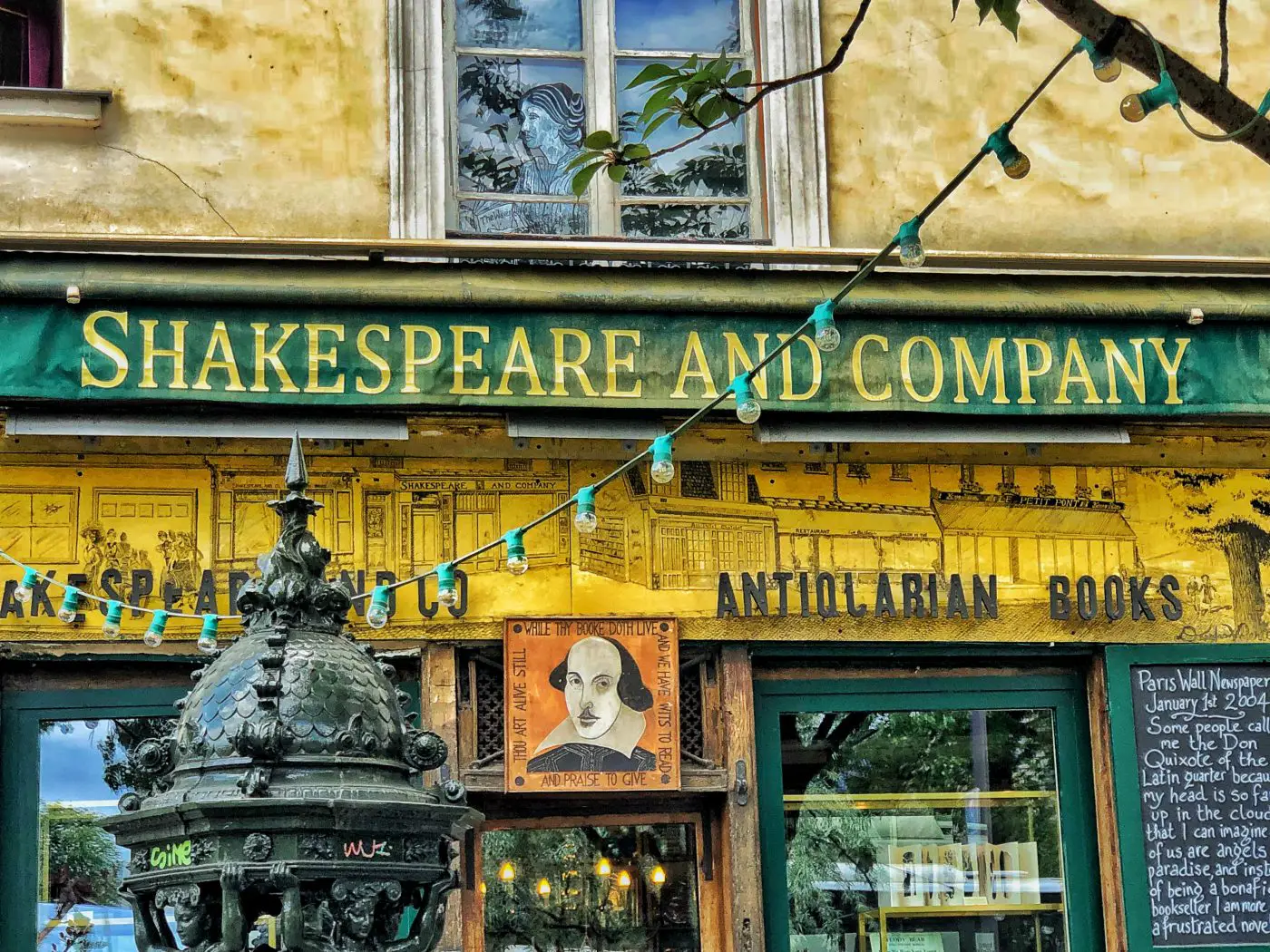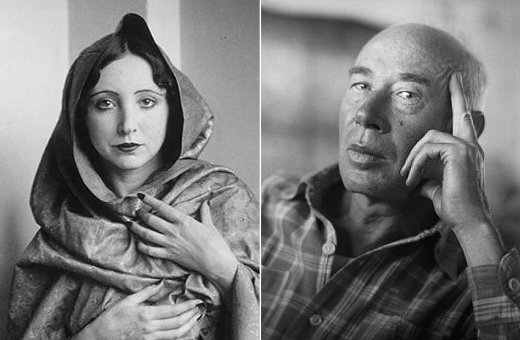[dropcap size=big]F[/dropcap]or the time being I am living in Paris—a city where you can’t walk two-dozen steps without coming upon historical significance, usually in some artistic sense.
A few days ago, I dined at the Closerie des Lilas, which was once a regular haunt for the likes of Hemingway, Fitzgerald, Joyce, Sartre, Wilde, Beckett, and too many more great names to list. The evening before that I was at La Rotonde, where Henry Miller and Anais Nin used to meet to discuss art and hide from the latter’s husband. My last apartment was in Montmartre, about two blocks from where Vincent Van Gogh shared a flat with his brother Theo.
…the “crackbrained individuals, neurasthenics, neurotics, psychopaths” and various other hellraising artists who have called Paris home.
I could go on, but I think you get the idea. Paris is no slouch when it comes to delivering on the artistic goods. And specifically, the artists who have gravitated and resided there have tended to be troublemakers, in one form or another.
To that end, let’s take a moment to look at — as Miller once referred to them — the “crackbrained individuals, neurasthenics, neurotics, psychopaths” and various other hellraising artists who have called Paris home.
Sylvia Beach

There is perhaps no bookstore in the world more renowned than Shakespeare and Company. While many know that it is synonymous with some of the greatest writers to ever take up the pen, few realize that its current location along the quays of the Seine is not its first incarnation.
Originally, Shakespeare and Company was founded by Sylvia Beach off the river closer to the Luxembourg Gardens, where it became a key meeting place of Lost Generation names like Hemingway, Fitzgerald, Ezra Pound, Gertrude Stein, Man Ray, et al. It was here that she began stirring up trouble by lending out copies of D.H. Lawrence’s salacious Lady Chatterley’s Lover (which was banned in the U.S. and U.K.), then publishing James Joyce’s controversial and inscrutable Ulysses, which went on to banned as well.
…she began stirring up trouble by lending out copies of D.H. Lawrence’s salacious Lady Chatterley’s Lover (which was banned in the U.S. and U.K.), then publishing James Joyce’s controversial and inscrutable Ulysses…
Her reputation as a literary-rogue peaked, however, when the Nazis occupied Paris in 1941 and Beach refused to give her last copy of Joyce’s Finnegans Wake to a Nazi officer. As a result, the store was closed, Beach was sent to an internment camp for six months, and — though Hemingway claimed to have personally “liberated” it during the Allied invasion — the original Shakespeare and Company never reopened.
Jim Morrison

Singer of the Doors and rock-and-roll shaman Jim Morrison spent the last several months of his life living in Paris. He was buried in the city’s famed cemetery Pere Lachaise, where — though being joined there by the likes of Oscar Wilde, Honore de Balzac, Eugene Delacroix, Frederic Chopin, Marcel Proust, and a host of other renowned names — he is almost certainly the most visited grave on the grounds.
He was the Lizard King, and his frenzied life has been the inspiration for acidheads throughout time and space.
What needs to be said about Morrison that hasn’t been already? He was the Lizard King, and his frenzied life has been the inspiration for acidheads throughout time and space. In fact, if you visit his tombstone today, it isn’t uncommon to find it littered with pills and joints that have been left by adoring fans.
Honore de Balzac

Speaking of Balzac, his fly-by-night ways earned inclusion on this list.
A prolific genius whose work spanned some 36 novels, 12 novellas, countless shorts stories, and handful of plays, Balzac is best known for his epic novel series La Comedie Humaine, which was populated with some of the most complex characters ever written.
He was also a wild debtor who was addicted to speculation. Balzac always had some new, usually crazy, money-making scheme for which he would borrow a boatload of francs from whomever would lend them, which he would invariably lose.
…he spent most of his life running out back doors and abandoning apartments in the middle of the night in order to escape creditors.
For example, he once decided that he would get rich by establishing a pineapple farm on the edge of Paris. Now, I don’t know if you’re familiar with the climate of Paris, but it is not amenable to pineapple growth. His plan, of course, never achieved fruition (both literally and figuratively). It was because of wild hares like these that he spent most of his life running out back doors and abandoning apartments in the middle of the night in order to escape creditors.
Anais Nin and Henry Miller

These two belong under the same section, so tied were their fates.
After abandoning his first wife and daughter to marry his second of eventually five wives, Henry Miller ditched said second wife and moved to Paris at the age of 40 to pursue his dream of writing. There he lived a delightfully seedy, sex-infused lifestyle that he famously described in Tropic of Cancer, which was published in 1934. The book was banned for obscenity in the United States and Britain.
Nin began a somewhat frenzied affair with Miller, among a number of other well-known artists (and her psychoanalyst).
It was during these early Paris years that he became acquainted with Anais Nin, who eventually gained renown for two things: her revelatory diaries detailing the more sordid aspects of her life, and her (at the time) uniquely female-centric erotica. Nin began a somewhat frenzied affair with Miller, among a number of other well-known artists (and her psychoanalyst). She was famously married to two men at once, neither of whom realized the bigamy until after her death.
Between the two of them, Henry Miller and Anais Nin are known for pushing the boundaries of sex. To this day, their names are thrown around almost like code words among literary people of more prolifically prurient proclivities.
Pablo Picasso and Guillaume Apollinaire
This story is rather simple, convoluted, and highly dubious all at the same time as neither of these men — one the father of cubist painting, the other a founder of surrealism — ever fessed up to the reality of what took place.
…both were implicated in the theft of the Mona Lisa along with a number of Iberian statues from the Louvre…
Long story short, both were implicated in the theft of the Mona Lisa along with a number of Iberian statues from the Louvre, which Picasso purportedly wanted to use as studies for his work. Details are sparse, but as far as anyone can tell, either Apollinaire or his secretary stole the painting and sculptures, Picasso held on to them for a number of days, they were all arrested and released without charges, then the pieces were returned.
What else is there to say? A crime like this — the theft of the Mona Lisa by two of history’s most renowned artists — could only be committed in Paris.




